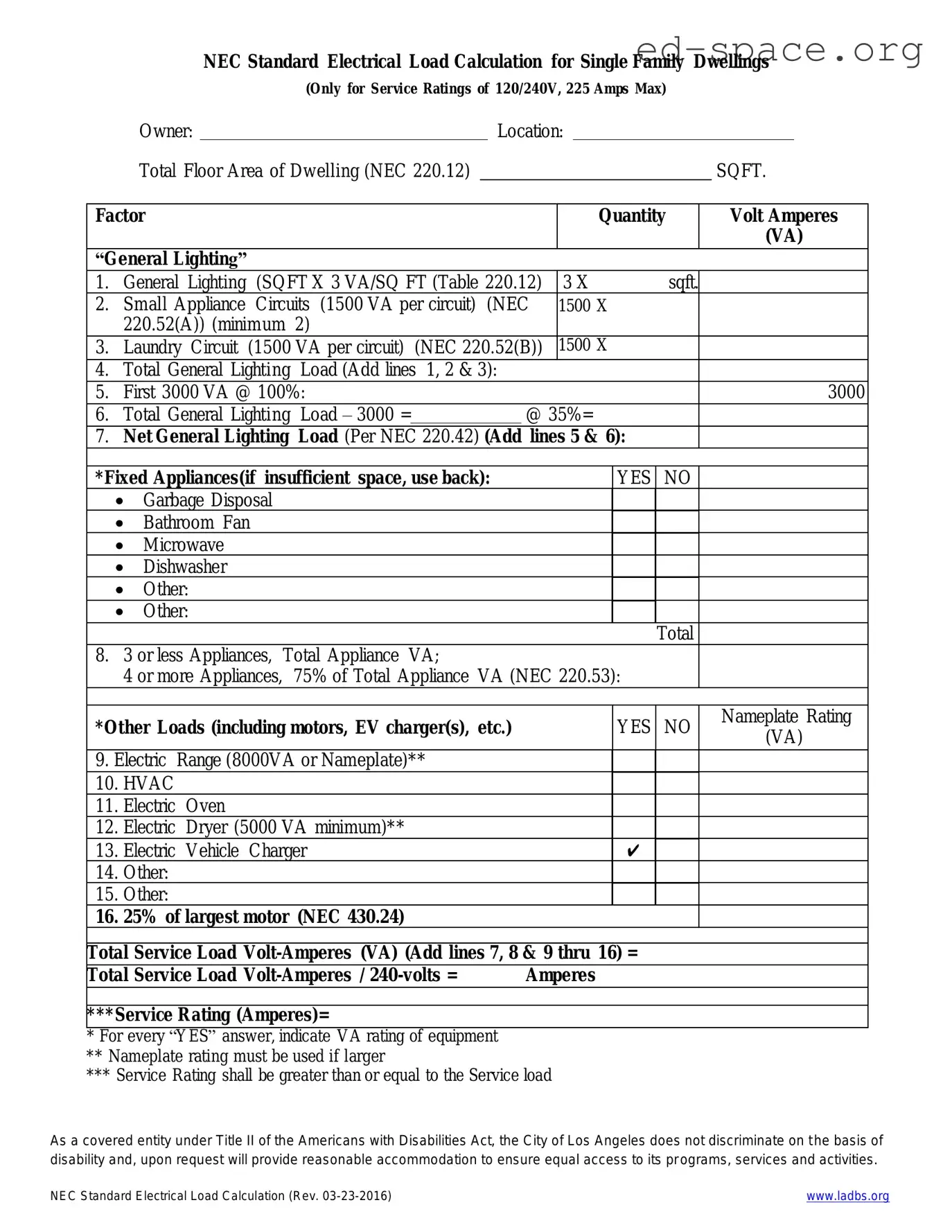What is the LADBS NEC Standard Electrical Load Calculation Form used for?
This form is designed to help calculate the standard electrical load for both residential and commercial buildings in compliance with the Los Angeles Department of Building and Safety (LADBS) and the National Electrical Code (NEC) guidelines. It ensures the electrical system is adequately sized to meet the building’s energy needs safely and efficiently.
How do I determine the total electrical load for a building?
To determine the total electrical load, start by listing all electrical appliances and systems within the building. For each item, note its power rating, usually found on the device or in the manufacturer's documentation. Calculate the total load by adding the power ratings of all devices and systems. The form guides you through specific adjustments and calculations, ensuring compliance with NEC standards.
Can this form be used for both residential and commercial properties?
Yes, the form is designed to accommodate the electrical load calculation requirements for both residential and commercial properties. It includes sections and instructions relevant to the diverse types of electrical loads commonly found in both settings.
Is there a deadline for submitting this form to LADBS?
The submission deadline typically depends on the specifics of your project. It's best to consult with LADBS directly or check their official website for the most current and relevant submission timelines related to your building or renovation project.
Where can I find instructions for filling out the form?
Instructions for completing the form are usually provided within the document itself. Additionally, the LADBS website offers guidance, and further assistance is available by contacting the LADBS directly through their customer service channels.
What happens if I make a mistake on the form?
If you make a mistake, it's important to correct it as accurately and quickly as possible. Mistakes can lead to delays in your project if the electrical load calculation is incorrect. You might need to resubmit the form with the correct information. For minor errors, contacting LADBS for advice on the best course of action is advisable.
Can I submit this form electronically?
Yes, LADBS typically accepts electronic submissions of the Standard Electrical Load Calculation form. Check the LADBS website for the most up-to-date information on how to submit your form electronically.
Do I need a professional electrician to help me fill out this form?
While it's not mandatory, consulting with a professional electrician or a qualified consultant is highly recommended. They can ensure that the electrical load calculations are accurate and comply with the NEC and LADBS requirements, which helps avoid potential issues during the project.
What should I do if my project's electrical requirements change after submitting the form?
If your project's electrical needs change after you have submitted the form, it's important to notify LADBS as soon as possible. You may need to submit a revised form that reflects the updated electrical load calculations. Keeping LADBS informed helps ensure your project stays compliant with all necessary regulations.

